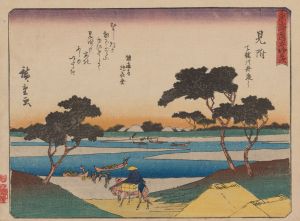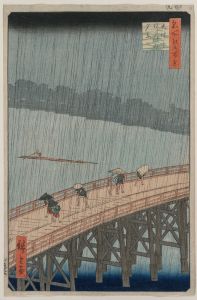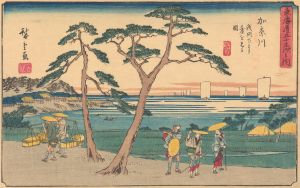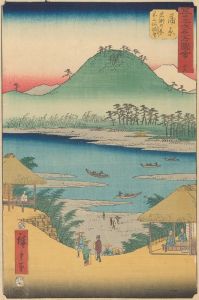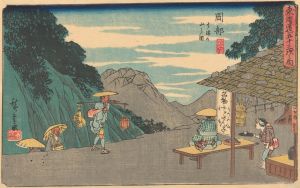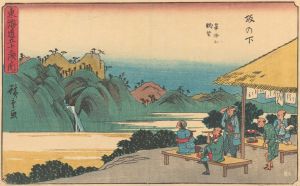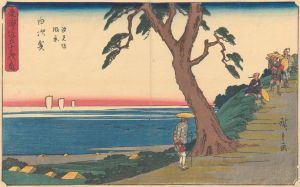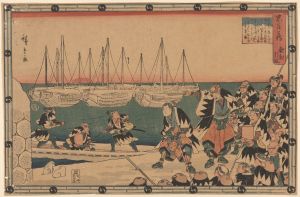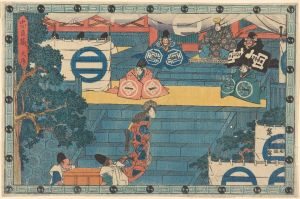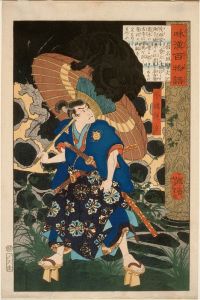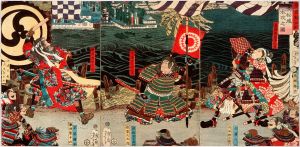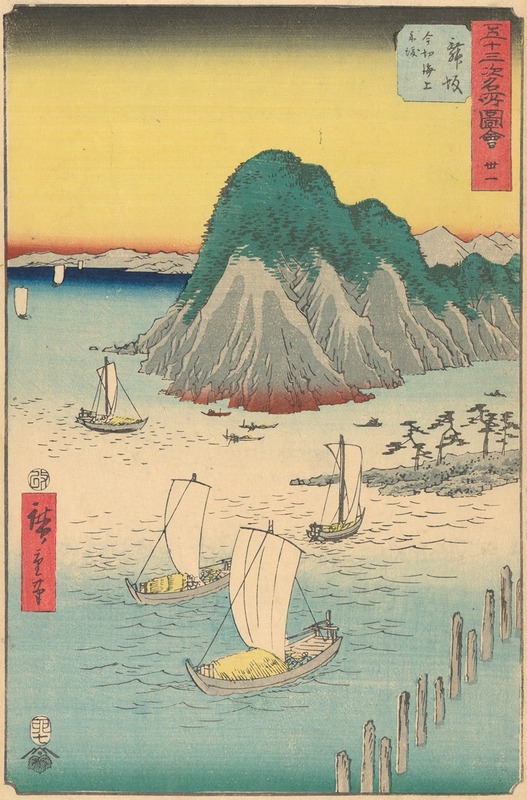
Maisaka
A hand-painted replica of Andō Hiroshige’s masterpiece Maisaka, meticulously crafted by professional artists to capture the true essence of the original. Each piece is created with museum-quality canvas and rare mineral pigments, carefully painted by experienced artists with delicate brushstrokes and rich, layered colors to perfectly recreate the texture of the original artwork. Unlike machine-printed reproductions, this hand-painted version brings the painting to life, infused with the artist’s emotions and skill in every stroke. Whether for personal collection or home decoration, it instantly elevates the artistic atmosphere of any space.
Andō Hiroshige, a renowned Japanese ukiyo-e artist of the Edo period, is celebrated for his landscape prints and depictions of nature. One of his notable works is "Maisaka," which is part of his famous series "The Fifty-three Stations of the Tōkaidō." This series, created between 1833 and 1834, captures the scenic beauty and cultural significance of the Tōkaidō road, a vital route connecting Edo (modern-day Tokyo) to Kyoto.
"Maisaka" is the thirtieth print in the series and depicts the Maisaka-juku, one of the post stations along the Tōkaidō. The Tōkaidō road was not only a major transportation route but also a cultural artery that facilitated the exchange of goods, ideas, and art during the Edo period. Hiroshige's series is celebrated for its ability to convey the essence of these stations, capturing the unique atmosphere and activities of each location.
In the "Maisaka" print, Hiroshige illustrates the coastal scenery of the area, which is located near Lake Hamana in present-day Shizuoka Prefecture. The composition typically features a view of the sea with boats, reflecting the station's role as a port town. The print captures the tranquil yet dynamic interaction between human activity and the natural environment, a hallmark of Hiroshige's work.
Hiroshige's use of color and perspective in "Maisaka" is notable. He employs a technique known as bokashi, a method of color gradation, to create a sense of depth and atmosphere. This technique enhances the visual impact of the sky and water, contributing to the overall mood of the scene. The careful attention to detail and the harmonious composition are characteristic of Hiroshige's style, which often emphasizes the beauty and transience of nature.
The "Fifty-three Stations of the Tōkaidō" series, including "Maisaka," was highly popular in its time and remains influential in the art world. It not only provided a visual record of the Tōkaidō road but also reflected the cultural and social dynamics of the Edo period. Hiroshige's work influenced many Western artists, including the Impressionists, who admired his innovative use of perspective and color.
Hiroshige's "Maisaka" print, like others in the series, serves as a historical document that offers insights into the travel and daily life of the Edo period. It captures the essence of a time when travel was both an adventure and a necessity, and it highlights the interconnectedness of people and places along the Tōkaidō road.
Today, Hiroshige's prints, including "Maisaka," are preserved in museums and collections worldwide, appreciated for their artistic merit and historical significance. They continue to inspire artists and art enthusiasts, offering a window into the past and a testament to Hiroshige's enduring legacy as a master of ukiyo-e.







